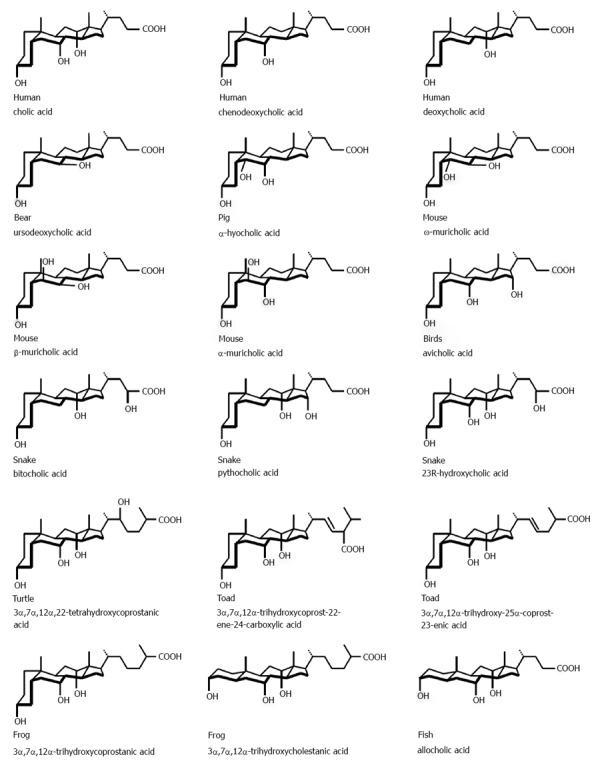Figure 1.

Perspective structures of major bile acids in selected animal biles according to groups of organisms: mammals (humans, bears, pigs and mice); birds;reptiles (snakes and turtles); amphibians (toads and frogs); and fish. The C24 common bile acids of higher vertebrates possess a steroid nucleus of four fused hydrocarbon rings with a cis A/B ring junction, but the biles of amphibians and fish contain C24 or C27 bile acids with trans A/B ring junctions. The polar hydroxyl functions generally are α-axial or equatorial and an aliphatic side chain is conjugated with glycine or taurine in C24 bile acids or sulfated in C27 bile acids. Because the ionized carboxylate, sulfonate or sulfate groups on the side chain render bile salts highly soluble in water, they are classified as soluble amphiphiles. The common bile acids differ in the number and orientation of the hydroxyl groups on the steroid nucleus. In humans, ursodeoxycholic acid is a secondary bile acid; whereas in a number of animals especially hystricomorpha and all ursidae, it is a primary bile acid i.e., made directly from cholesterol in the liver. Reproduced with modifications and with permission from[165].
